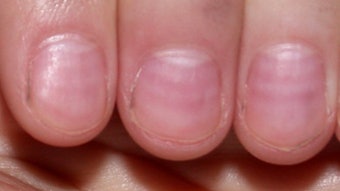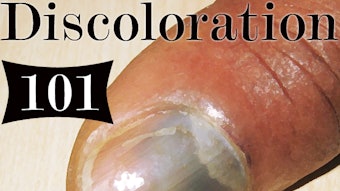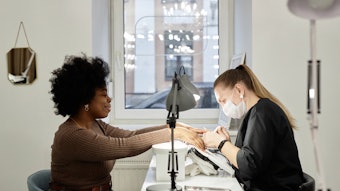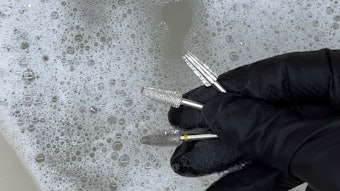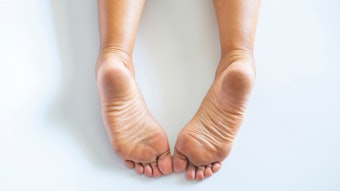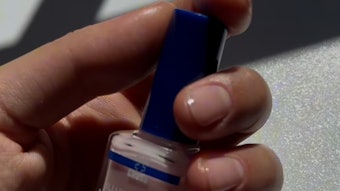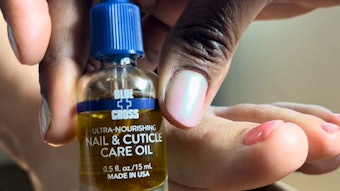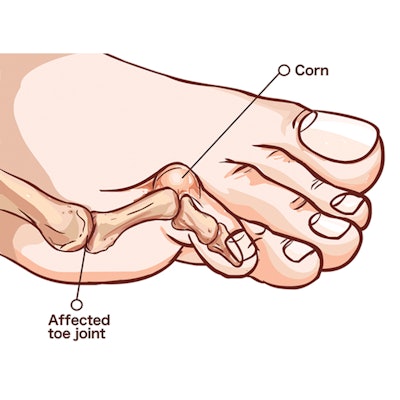
Learn how you can provide clients with immediate relief from hammertoe using safe and effective pedicure practices.
Bette Midler once famously said, “I firmly believe that with the right footwear one can rule the world.” Wearing the wrong footwear, however, can do more than hinder your productivity—it can negatively impact your overall foot health. In addition to causing a range of other issues, sporting tight, ill- fitting shoes on a regular basis can increase your odds of developing hammertoe, a foot condition that affects thousands of women and men each year. “Hammertoe is a deformity in which one or more of the toes is contracted, causing the middle, end or both knuckles to become bent in a way that a bone sticks up or the end of the toe rubs against the shoe and the ground,” explains New York- based podiatrist Ernest L. Isaacson, DPM, PC. “The proximal interphalangeal joint becomes lifted, resulting in a permanent clawlike position,” adds Janet McCormick, author and cofounder of Nailcare Academy, an online education platform for techs. So what should you do if a client has a hammertoe? Read on to get the rundown on hammertoe, along with tips and tricks for safely handling the condition in the salon.
Standout Symptoms
While wearing ill-fitting footwear does increase the odds of developing hammertoe, Isaacson says uncomfortable shoes aren’t the sole cause. Hammertoe is typically hereditary; men and women with a family history of the condition are more likely to experience it. Similarly, those with certain foot types are also more prone to developing hammertoe. “People with flat feet, high arches or foot conditions like arthritis, bunions or Morton’s toe (a condition when the second toe is longer than the big toe) are also highly susceptible to hammertoe,” informs McCormick.
RELATED: Nail Clinic – Temporomandibular Joint Disorder
Although not all cases of hammertoe are painful, symptoms typically include discomfort while walking, corns or calluses, inflammation, redness, rubbing and irritation on the top of the bent toe or, in more severe cases, open sores. “There are two types of hammertoe: flexible hammertoe, which occurs when the toe can still be moved at the joint, and rigid hammertoe, which happens when the tendons become too rigid. This causes the joint to come out of alignment and prevents the toe from being able to move,” explains McCormick.
Treatment and Prevention
Early diagnosis is the key to treating the condition sans surgery. “For mild cases, podiatrists typically recommend wearing accommodative shoes that are wide enough along the sides and deep enough to fit the foot,” advises Dr. Isaacson. “For more severe cases, there are multiple surgical procedures with minimal downtime and few complications that provide excellent long-term results.” Some of the options available include a tendon transfer, which is a procedure that essentially reroutes the tendon to “pull” the toe into a straight position; joint resection, which requires the doctor to cut ligaments and tendons to straighten the toe; fusion, a procedure where the surgeon removes portions of the joint so the bones can grow together; and, in rare cases, amputation of the toe.
Clients’ best bet for avoiding the problem altogether is preventative care. “Ideally, clients should avoid wearing ill-fitting shoes at all costs,” insists Marcela Correa, medical pedicurist at MediPediNYC salon in New York. Another option is to wear toe protectors, padded gel tubes that slide over the toe and prevent friction. For diabetic patients, Dr. Isaacson typically recommends surgical preemptive straightening of the toe to reduce pressure and friction. “Otherwise, the skin may open from the pressure, which may lead to more devastating complications,” he says.
RELATED: Test Yourself – Eyestrain
Salon Safety
Servicing clients with hammertoe is typically safe, as long as there are no open lesions. First, implement extensive antiseptic practices to protect against unforeseen infections. “Always wear gloves and wipe off surfaces with alcohol prior to and after every service,” advises McCormick. Using a gentle touch throughout the service is also key. “Techs should never use a corn remover to treat hammertoe, as it may actually damage the skin’s melanin,” insists Correa. McCormick recommends using a softener to help reduce (not remove) any problem areas, which may, in turn, relieve pain or irritation. Taking proper precautions during the massage portion of a pedicure is especially important. “Never attempt to straighten or pull the toe,” insists McCormick. Instead, gently massage around the toe to reduce pressure and relieve pain. “Apply a massage oil or cuticle oil around the toe to reduce friction,” adds Correa. Lastly, if the condition appears to interfere with a client’s daily life, or you notice open lesions, advise her to visit a podiatrist as soon as possible. While hammertoe might cause clients discomfort, the good news about the condition is that the risks associated with it are usually minimal. “With effective treatment and properly fitting footwear,” says Dr. Isaacson, “anyone with hammertoe can live a long and healthy life.”
Hammertoe Facts
- Forefoot deformities, such as hammertoe, affect as many as 20% of Americans.
- Women are more likely to develop hammertoe than men.
- At one time or another in their lives, 75% of Americans will experience foot problems.
- A 2 1⁄2-inch high heel can increase the load on the forefoot by 75%.
- There should always be at least a 1⁄2-inch of space between your longest toe and the inside tip of your shoe.
Sources: Foot.com; Mayo Clinic; Nextremity Solutions
– by Taylor Foley
[Image: Bigstock]
